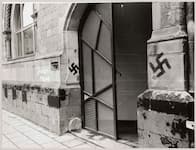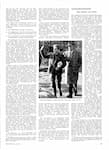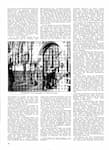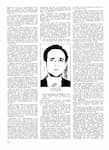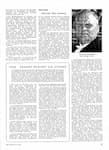Anti-Semitic graffiti in Cologne
That anti-Semitism had not died out in 1945 became clear at the end of the 1950s, when from late December 1959 to early February 1960 a wave of anti-Semitic graffiti swept through the young Federal Republic. It began on Christmas Eve 1959, when two members of the extreme right-wing German Reich Party daubed swastikas and ‘Germans demand Jews out’ on the walls of Cologne’s Roonstrasse synagogue, which had been rededicated only three months earlier following its destruction by the Nazis in November 1938 and during the Second World War. In the first six weeks of 1960, 833 similar incidents followed throughout the country. The federal government’s reaction, with a law against ‘popular incitement to hatred’ and the raising of National Socialism to the rank of a key topic in school history lessons, resulted in the anti-Semitic outbreak being regarded today as an early turning point in Germany’s dealing with the Nazi-past.
